Address
304 North Cardinal
St. Dorchester Center, MA 02124
Work Hours
Monday to Friday: 7AM - 7PM
Weekend: 10AM - 5PM
Address
304 North Cardinal
St. Dorchester Center, MA 02124
Work Hours
Monday to Friday: 7AM - 7PM
Weekend: 10AM - 5PM

Navigating the evolving landscape of consumer preferences and technology, understanding the consumer perspective is paramount in the dynamic world of product development and marketing. It’s a glimpse into the hearts and minds of the people who use these products daily, offering insights that can shape future innovations and business strategies. By diving into the consumer perspective, we can uncover the what, why, and how of their experiences, revealing valuable lessons for those eager to meet the demands of the modern market.
The commercial air fryer industry has seen a remarkable surge in popularity over the past few years, transforming the way we think about cooking and food preparation. This rise can be attributed to a combination of factors, including health consciousness, technological advancements, and evolving consumer preferences.
With a growing awareness of the health risks associated with deep-frying, consumers are seeking healthier alternatives. Air fryers have emerged as a fantastic solution, offering a crispy, golden finish to foods without the excess oil. This shift towards healthier cooking methods has propelled the demand for commercial air fryers in restaurants, cafes, and even foodservice establishments.
The convenience factor cannot be overlooked. Commercial air fryers are designed to be time-efficient, reducing cooking times compared to traditional frying methods. This is a significant draw for busy kitchens that need to serve large volumes of food quickly without compromising on quality.
Technology has also played a pivotal role in the rise of commercial air fryers. Modern units come with features like adjustable temperature controls, pre-programmed settings, and even the ability to connect to smartphones for remote monitoring. These innovations have made air fryers more versatile and user-friendly, appealing to both chefs and customers alike.
Moreover, the cost-effectiveness of air fryers has been a game-changer. They consume less energy than traditional fryers and have a lower initial investment cost. For businesses looking to reduce overheads while maintaining high-quality food standards, commercial air fryers offer an attractive option.
Innovation in design has led to compact and sleek air fryers that can fit into even the most space-constrained kitchens. These units not only save space but also enhance the overall aesthetic of the kitchen environment, making them a popular choice among restaurant owners and chefs.
The market has seen a variety of new entrants, with established appliance brands and startups alike jumping into the commercial air fryer space. This competition has driven innovation and improved product quality, as manufacturers strive to differentiate their offerings.
As the demand for commercial air fryers has grown, so too has the need for specialized factories to produce these appliances. These factories have had to adapt to the changing needs of the market, focusing on efficiency, scalability, and quality control.
In terms of health benefits, commercial air fryers have been hailed as a healthier alternative to traditional frying methods. They use hot air to circulate around the food, which helps to cook it without the need for large amounts of oil. This not only reduces the calorie content of the food but also cuts down on the risk of heart disease and other health issues associated with excessive oil consumption.
From a business perspective, the versatility of commercial air fryers is a major selling point. They can be used to cook a wide range of foods, from crispy French fries to deliciously golden chicken wings. This flexibility means that restaurants can offer a variety of menu items without the need for multiple cooking methods.
Another factor contributing to the rise of commercial air fryers is the increasing trend towards fast-casual dining. As consumers seek out quick and convenient meal options, restaurants are turning to air fryers to provide a healthier alternative to fried foods that are still satisfying and appetizing.
The environmental impact of cooking methods has also become a significant consideration for many consumers and businesses. Commercial air fryers are more energy-efficient than traditional fryers, and their reduced oil usage is more sustainable, contributing to a smaller carbon footprint.
In conclusion, the rise of commercial air fryers is a multifaceted phenomenon driven by health concerns, technological advancements, and changing consumer expectations. As the industry continues to grow, we can expect to see even more innovative designs and features that cater to the diverse needs of the market.

Commercial air fryers have seen a remarkable transformation over the years, evolving from simple kitchen appliances to sophisticated cooking solutions. The latest designs in this domain are not just about cooking healthier fried foods but also about enhancing efficiency, user experience, and sustainability. Here’s a closer look at some of the innovative features that are shaping the commercial air fryer market.
The integration of smart technology has been a game-changer in commercial air fryer design. Modern models now come with digital displays and programmable settings, allowing chefs and operators to customize cooking times and temperatures with precision. This not only ensures consistent results but also streamlines the cooking process, saving time and effort.
One of the most significant innovations is the development of multi-functional air fryers. These advanced units are not just limited to frying; they can also bake, roast, and even grill. This versatility means that a single appliance can replace multiple cooking devices, reducing the footprint in commercial kitchens and lowering energy consumption.
Energy efficiency is another crucial aspect that has seen substantial innovation. Newer models are designed to use less electricity while still providing the same or better cooking performance. This is achieved through improved heat distribution systems and more efficient motors, which not only reduce operational costs but also contribute to a greener kitchen environment.
The health-conscious consumer has driven the demand for air fryers that can produce crispy, golden-brown fried foods with minimal oil. Manufacturers have responded by creating air fryers with larger baskets and more powerful fans to ensure even heat distribution and a thorough cooking process. This not only reduces the fat content but also the overall calorie count of the food.
Safety features have also been significantly enhanced in recent designs. Many modern commercial air fryers are equipped with automatic shut-off functions to prevent overheating and fires. Some models even have child safety locks, ensuring that the appliance is safe to use in busy kitchen environments where children might be present.
The design of the air fryer’s exterior has also seen a shift towards sleeker, more modern aesthetics. Many new models feature a stainless steel finish, which not only looks professional but also withstands the rigors of commercial use. The controls are now often touch-sensitive, eliminating the need for physical buttons and reducing the risk of dirt and grime buildup.
In terms of maintenance, innovations such as non-stick coatings and removable parts have made cleaning easier and more efficient. Chefs can now spend less time on post-cooking cleanup and more time focusing on their culinary creations.
The user interface has also been refined, with some air fryers now offering Wi-Fi connectivity. This allows operators to monitor and control the appliance remotely, which is particularly useful in large commercial kitchens where multiple units are in use.
Another interesting development is the inclusion of smart recipes and cooking guides. Many air fryers come with built-in memory for favorite recipes, and some even offer the ability to download new recipes directly from the manufacturer’s database.
Finally, the materials used in the construction of commercial air fryers have been upgraded. Lightweight yet durable materials ensure that the appliances are easy to move around the kitchen without compromising on structural integrity.
In summary, the innovations in commercial air fryer design are a testament to the industry’s commitment to meeting the demands of modern kitchens. From smart technology and energy efficiency to health and safety features, these advancements are setting new standards in the commercial cooking appliance market.
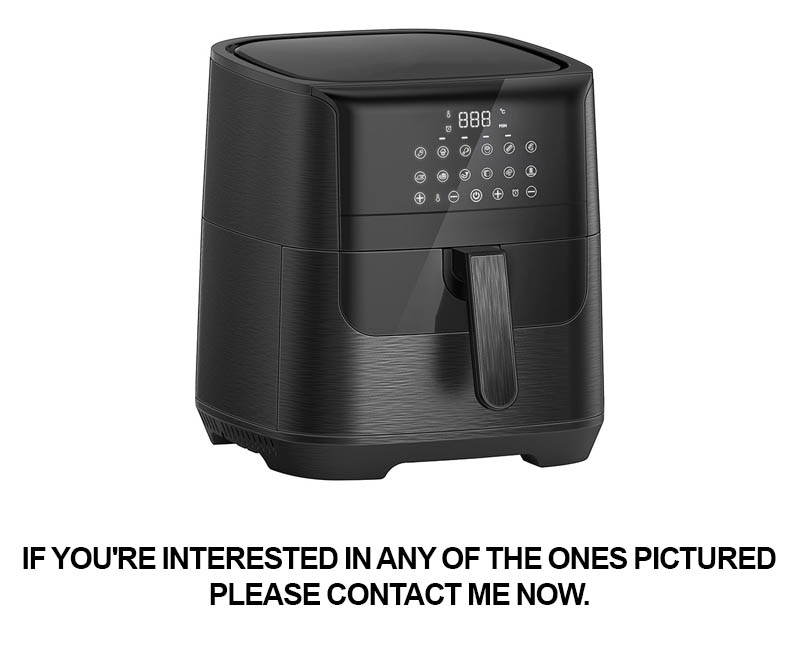
The commercial air fryer market has been experiencing a surge in interest and demand, driven by a combination of health-conscious consumers and the convenience it offers to busy chefs and operators. Here’s a closer look at the current market insights and trends shaping this dynamic sector.
Health and Wellness FocusConsumers are increasingly gravitating towards healthier eating options, and commercial air fryers have capitalized on this trend by offering a healthier alternative to traditional deep-frying methods. The market is witnessing a rise in demand for air fryers that can produce crispy, golden fried foods with significantly less oil, making them a more appealing choice for health enthusiasts.
Smart Technology IntegrationModern commercial air fryers are not just about cooking; they’re also about technology. The market is seeing a growing integration of smart features such as Bluetooth connectivity, allowing operators to control the fryer remotely through their smartphones. This tech-savvy approach enhances convenience and efficiency in kitchen operations.
Customizable Cooking FunctionsManufacturers are now offering a variety of cooking programs and settings to cater to different types of food and cooking styles. From crispy French fries to succulent chicken wings, commercial air fryers are becoming more versatile, enabling operators to achieve the perfect texture and flavor with minimal effort.
Energy EfficiencyWith rising energy costs and environmental concerns, energy efficiency has become a key factor in the commercial air fryer market. Newer models are designed to be more energy-efficient, reducing utility bills for businesses and aligning with sustainability goals.
Compact and Modular DesignsThe demand for space-saving and modular kitchen solutions has led to the development of compact commercial air fryers. These units are ideal for smaller kitchens or for operators looking to expand their cooking capabilities without taking up too much space.
Customizable Branding and CustomizationBranding and customization are becoming more important in the commercial air fryer market. Operators can now choose fryers that come with custom branding options, allowing them to integrate their brand into the kitchen environment and enhance customer experience.
Food Safety and SanitationThe commercial air fryer market is also responding to the growing importance of food safety and sanitation. Newer models feature non-stick surfaces and easy-to-clean components, reducing the risk of cross-contamination and simplifying the cleaning process.
Global ExpansionAs the health and wellness trend continues to spread globally, the commercial air fryer market is expanding beyond its traditional strongholds. Countries with emerging middle classes and a growing interest in healthier lifestyles are seeing a rise in demand for these appliances.
Sustainability and Eco-Friendly MaterialsManufacturers are increasingly using eco-friendly materials in the production of commercial air fryers. This includes sustainable plastics and recycled components, which not only appeal to environmentally conscious consumers but also contribute to a more sustainable supply chain.
Enhanced Cooking PerformanceAdvancements in fan technology and heat distribution have led to improved cooking performance in commercial air fryers. These innovations ensure that food is cooked evenly and efficiently, reducing the risk of overcooking or burning.
Market CompetitionThe competition in the commercial air fryer market is heating up, with numerous brands vying for market share. This competition is driving innovation and leading to a wider variety of products that cater to different price points and customer needs.
Regulatory ComplianceAs the market grows, regulatory compliance is becoming a more significant consideration. Manufacturers are ensuring that their products meet international safety and quality standards, which is crucial for global market penetration.
The commercial air fryer market is a testament to the ever-evolving culinary landscape, where technology, health, and convenience intersect to create new opportunities for both consumers and businesses.
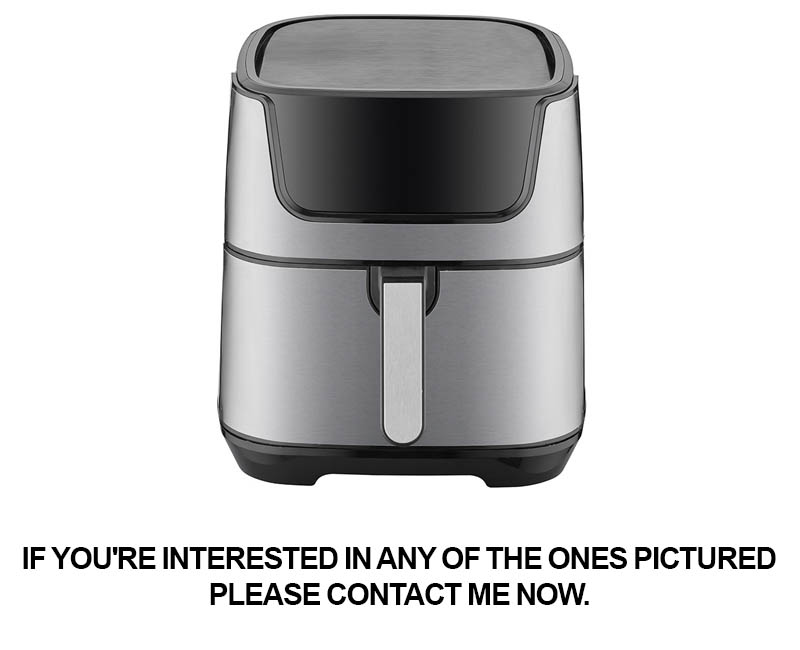
In the realm of commercial air fryer manufacturing, data-driven analysis has become a cornerstone for success. By delving into consumer behavior, market demand, and technological advancements, manufacturers can make informed decisions that drive innovation and efficiency. Here’s a glimpse into the world of data-driven insights in the commercial air fryer industry.
Consumer Preferences ShiftsConsumer preferences are constantly evolving, and data analytics play a crucial role in understanding these shifts. For instance, recent data indicates a growing interest in healthier cooking methods, which has led to an increased demand for air fryers that offer low-fat, crispy cooking options. By analyzing this trend, manufacturers can tailor their designs to include features like adjustable temperature controls and larger baskets to accommodate larger batches.
Market Demand AnalysisMarket demand analysis is a vital component of data-driven strategy. Companies like Philips and Gourmia have seen a surge in demand for their commercial air fryers, with sales skyrocketing due to the rise of health-conscious consumers and the popularity of fast-casual dining. By tracking sales data and market share, manufacturers can identify which models are performing well and why, allowing them to focus on similar features in future designs.
Technological AdvancementsThe pace of technological advancements in the commercial air fryer sector is rapid. Data-driven analysis helps manufacturers stay ahead by identifying emerging technologies. For example, the integration of smart technology, such as Wi-Fi connectivity and app integration, has become increasingly popular. By analyzing user feedback and usage patterns, manufacturers can invest in these technologies to enhance their product offerings.
Product Lifecycle ManagementUnderstanding the lifecycle of a product is essential for long-term success. Data-driven analysis allows manufacturers to track the performance of their air fryers from launch to obsolescence. By monitoring factors like repair rates, customer satisfaction, and usage frequency, they can optimize their product design and improve customer loyalty.
Supply Chain OptimizationEfficient supply chain management is crucial for cost-effectiveness and timely delivery. Data-driven analysis helps manufacturers streamline their supply chains by identifying bottlenecks and inefficiencies. For example, by analyzing production data, manufacturers can forecast demand and adjust inventory levels to reduce waste and ensure products are always in stock.
Regulatory ComplianceRegulatory compliance is a significant concern for commercial air fryer manufacturers. Data-driven analysis can help ensure that products meet safety standards and environmental regulations. By tracking compliance data, manufacturers can identify any potential issues early on and take corrective actions to avoid costly recalls or legal disputes.
Customer Behavior PatternsAnalyzing customer behavior patterns provides valuable insights into how and why consumers choose certain air fryers. Data such as purchase history, return rates, and online reviews can reveal preferences for specific features, such as timer settings, energy efficiency, and ease of use. This information can guide manufacturers in developing products that resonate with their target market.
Competitive LandscapeStaying competitive in the commercial air fryer market requires a deep understanding of the competitive landscape. Data-driven analysis allows manufacturers to monitor their competitors’ offerings, pricing strategies, and marketing campaigns. By identifying gaps in the market, they can position their products to appeal to underserved customer segments.
Consumer Sentiment AnalysisConsumer sentiment analysis involves sifting through social media, reviews, and forums to gauge public opinion. This data can be invaluable for manufacturers looking to anticipate market trends and consumer needs. For example, a surge in positive sentiment around a new cooking technique could signal an opportunity to develop air fryers that cater to that demand.
Innovation in MaterialsThe choice of materials in commercial air fryers is critical for both performance and safety. Data-driven analysis can help manufacturers select the right materials by evaluating durability, heat resistance, and environmental impact. By staying informed about the latest material innovations, they can offer products that are not only high-performing but also sustainable.
Global Market TrendsThe global market for commercial air fryers is diverse, with different trends emerging in various regions. Data-driven analysis allows manufacturers to tailor their products to specific markets. For instance, the demand for energy-efficient air fryers may be higher in areas with strict energy policies, while other regions might prioritize fast cooking times.
By leveraging data-driven analysis, commercial air fryer manufacturers can navigate the complexities of the market with precision. From understanding consumer behavior to optimizing supply chains, data insights are the key to creating products that not only meet but exceed customer expectations.
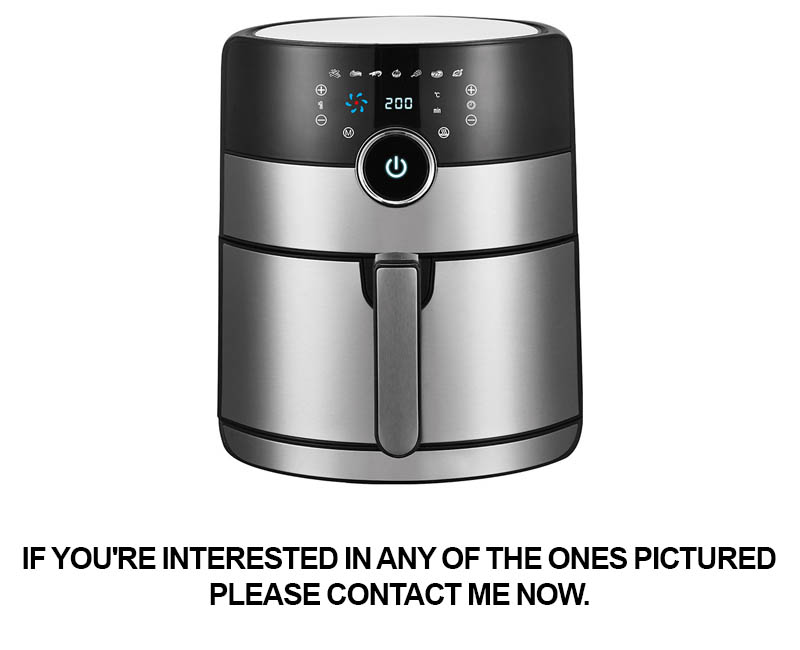
Commercial air fryer factories play a pivotal role in the industry, ensuring that the latest trends and technological advancements are translated into high-quality, market-ready products. These factories are the heartbeat of the commercial air fryer market, driving innovation, efficiency, and quality.
The production process in these factories is a marvel of modern engineering and precision. From the initial design phase to the final assembly, each step is meticulously controlled to ensure that the end product meets the stringent demands of the commercial kitchen environment. Automation has become a key component, with robotics and advanced machinery streamlining operations and reducing human error.
Innovation is at the core of these factories, with continuous research and development (R&D) efforts yielding cutting-edge air fryer models. These R&D departments are staffed by a team of experts who are constantly on the lookout for new materials, cooking technologies, and design features that can enhance the performance and appeal of commercial air fryers. This commitment to innovation ensures that factories can stay ahead of the curve and cater to the evolving needs of chefs and restaurateurs.
Quality control is a non-negotiable aspect of commercial air fryer factories. With the high stakes involved in commercial kitchens, where equipment reliability is crucial for business continuity, these factories adhere to rigorous quality assurance protocols. This includes rigorous testing of components and assembled units to ensure they can withstand the intense demands of a busy kitchen. The use of premium materials and the latest manufacturing techniques contribute to the durability and longevity of the air fryers produced.
Efficiency is another critical factor. Commercial air fryer factories are designed to maximize output while minimizing waste. Energy-efficient technologies are integrated into the production line to reduce the carbon footprint and operational costs. This not only benefits the environment but also makes the products more attractive to environmentally conscious businesses and consumers.
Supply chain management is a complex task for these factories. They must coordinate with suppliers to ensure a steady flow of raw materials, while also managing inventory to avoid stockouts. The ability to scale production quickly and efficiently is essential, as market demands can fluctuate rapidly. This requires sophisticated inventory management systems and strong relationships with suppliers.
Safety is paramount in the manufacturing process. Factories are equipped with safety measures to protect workers and prevent accidents. Regular maintenance and inspections of machinery are conducted to ensure they operate safely and reliably. Additionally, the design of commercial air fryers takes into account safety features that prevent kitchen fires and protect employees from burns and other hazards.
Customization is also a key service offered by these factories. Understanding that no two commercial kitchens are exactly the same, they provide tailored solutions to meet specific needs. This can range from adjusting the size and capacity of the fryers to integrating them into existing kitchen layouts. The ability to offer bespoke solutions helps these factories build long-term relationships with their clients.
The global reach of commercial air fryer factories is impressive. They export their products to markets around the world, adapting to different regulations and standards. This international presence not only expands their customer base but also exposes them to diverse culinary practices, which can inspire new product developments.
In terms of economic impact, commercial air fryer factories contribute significantly to the global economy. They provide employment opportunities, support local economies through procurement of materials and services, and generate tax revenue. The success of these factories is often a barometer of the health of the commercial kitchen equipment industry as a whole.
In conclusion, the role of commercial air fryer factories is multifaceted. They are not just manufacturers; they are innovators, quality controllers, efficiency experts, and global suppliers. Their dedication to excellence in every aspect of their operations ensures that the commercial air fryer market continues to grow and evolve, meeting the demands of a dynamic and ever-changing industry.
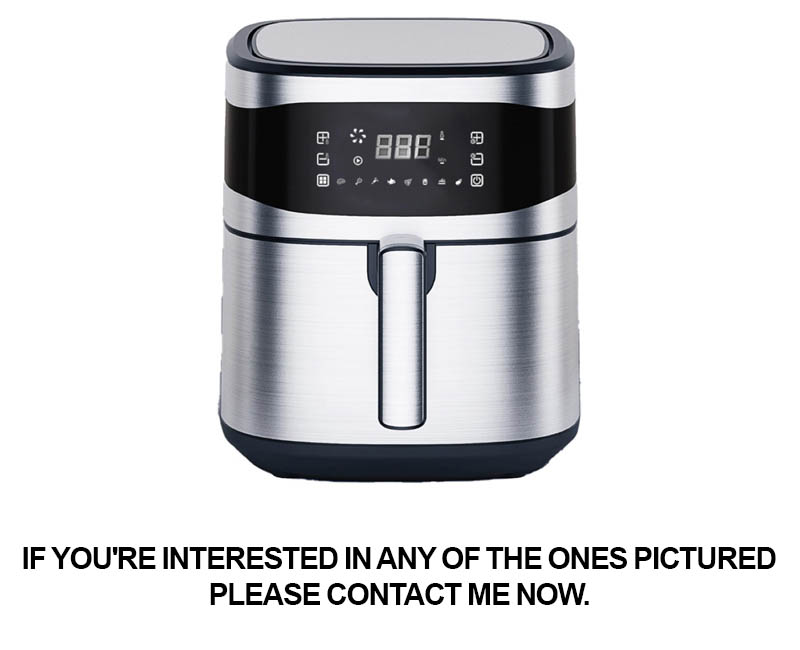
Commercial air fryers have become a game-changer in the culinary world, offering numerous benefits that have not only revolutionized the way we cook but also enhanced the efficiency and profitability of commercial kitchens. Here’s a closer look at some of the key advantages these appliances bring to the table.
The Health AspectOne of the standout benefits of commercial air fryers is their ability to provide healthier cooking options. By using a fraction of the oil compared to traditional frying methods, these fryers significantly reduce the calorie and fat content of fried foods. This is a major draw for health-conscious consumers and for establishments looking to offer more nutritious menu items.
Efficiency and Cost-EffectivenessCommercial air fryers are designed to be highly efficient, which translates to lower energy consumption and, subsequently, reduced operational costs. Their ability to cook food quickly at high temperatures means less time spent on cooking, which can lead to lower labor costs. Additionally, the reduced need for oil means fewer expenses on oil purchases and disposal.
Versatility in CookingThese fryers are not just for frying; they are versatile cooking appliances that can handle a variety of tasks. They can roast, grill, and even bake, making them a multi-functional addition to any commercial kitchen. This versatility allows chefs to expand their menu without investing in multiple appliances.
Consistency and UniformityCommercial air fryers are known for their ability to cook food evenly and consistently. The hot air circulates around the food, ensuring that every piece is cooked to perfection. This is particularly important in high-volume kitchens where uniformity is crucial for customer satisfaction.
Reduced CleanupCleaning up after cooking can be a time-consuming task, but commercial air fryers make it easier. Since they use less oil and cook at higher temperatures, the residue is minimized, making the cleanup process quicker and less labor-intensive.
Safety FeaturesSafety is a top priority in commercial kitchens, and air fryers contribute to a safer environment. They eliminate the risk of hot oil spills and splatters that are common with traditional fryers. Additionally, the absence of open flames reduces the risk of fire hazards.
Enhanced FlavorDespite the healthier cooking method, commercial air fryers do not compromise on flavor. The high-temperature cooking process locks in the natural flavors of the food, resulting in crispy, delicious dishes that are hard to resist.
Customization and Menu ExpansionCommercial air fryers allow for easy customization of recipes. Chefs can experiment with different cooking times and temperatures to create unique dishes that cater to specific dietary preferences or regional tastes. This flexibility opens up opportunities for menu expansion and innovation.
Improved PresentationThe visual appeal of food is as important as its taste. Commercial air fryers produce beautifully browned and crispy exterior textures, which are visually appealing and can enhance the presentation of dishes on the menu.
Enhanced Customer ExperienceBy offering healthier options and consistent quality, commercial air fryers can contribute to an improved customer experience. Customers who are looking for healthier alternatives or those with dietary restrictions can find satisfying options without compromising on taste.
Longevity and DurabilityCommercial air fryers are built to withstand the rigors of a busy kitchen environment. They are often made with durable materials and are designed to last, reducing the need for frequent replacements and the associated costs.
Environmental ImpactThe reduced oil usage and energy consumption of commercial air fryers also have a positive environmental impact. By using less oil, there’s less waste and a lower carbon footprint, aligning with the growing trend towards sustainability in the foodservice industry.
In conclusion, the benefits of commercial air fryers are multifaceted, offering health advantages, efficiency, versatility, and safety. Their ability to enhance the quality of food, reduce costs, and improve the overall kitchen environment makes them an invaluable asset for any commercial kitchen.

In the fast-paced world of commercial air fryers, challenges often emerge that test the industry’s resilience and innovation. Here’s a closer look at some of these challenges and the creative solutions that have been developed to overcome them.
The demand for energy-efficient appliances has surged, and commercial air fryers are no exception. As businesses seek to reduce their carbon footprint and operational costs, the challenge lies in balancing efficiency with performance. Solutions include the integration of smart technology that optimizes energy use and the development of fryers with better insulation to retain heat more effectively.
Maintaining consistent quality across large batches can be daunting. To tackle this, factories are investing in advanced quality control systems. These systems use sensors and AI to monitor the frying process, ensuring that every batch meets the same high standards. Additionally, modular designs allow for quick and easy component replacements, reducing downtime and maintaining quality.
The health-conscious consumer is on the rise, and with it, the challenge of offering air fryers that not only perform well but also cater to healthier lifestyles. Solution-wise, manufacturers are focusing on healthier oil options and incorporating features that allow for air-frying with minimal oil. This approach not only satisfies the market’s demand for healthier cooking but also extends the life of the fryer by reducing wear and tear on heating elements.
Competition in the commercial air fryer market is fierce, with numerous brands vying for market share. Standing out requires constant innovation. Factories are responding by investing in research and development to create unique features and functionalities. This includes everything from innovative cooking modes to user-friendly interfaces that make the fryer more appealing to chefs and operators alike.
As the world becomes more digitized, the challenge of integrating commercial air fryers with smart kitchen systems has become a priority. To address this, manufacturers are developing fryers that can be controlled remotely via apps or integrated into kitchen management software. This not only streamlines operations but also allows for predictive maintenance, reducing the risk of breakdowns.
Safety is a paramount concern in commercial kitchens, and air fryers are no exception. The challenge is to ensure that these appliances are both safe to use and maintain. Solutions include the use of non-toxic materials, clear safety warnings, and regular safety checks. Additionally, fryers are being designed with features like automatic shut-off to prevent overheating and potential fires.
The cost of materials and labor can fluctuate significantly, impacting the overall cost of commercial air fryers. Factories are combating this by optimizing supply chains, negotiating better deals with suppliers, and automating certain manufacturing processes. These strategies help to keep costs down without compromising on quality.
The demand for customization is on the rise, with businesses looking for fryers that can be tailored to their specific needs. Factories are responding by offering a range of customizable options, from different sizes and capacities to unique features that cater to specific types of cuisine. This level of customization not only meets the diverse needs of the market but also adds a competitive edge to the products.
Lastly, the challenge of keeping up with regulatory changes and certifications is a constant one. Factories are staying ahead by maintaining close relationships with regulatory bodies and ensuring that all products meet the latest safety and environmental standards. This proactive approach helps to avoid costly delays and ensures that products can be sold globally with ease.
In summary, the challenges faced by commercial air fryer factories are diverse and multifaceted. However, through a combination of innovative design, smart technology, and strategic business practices, these challenges are being turned into opportunities for growth and improvement.
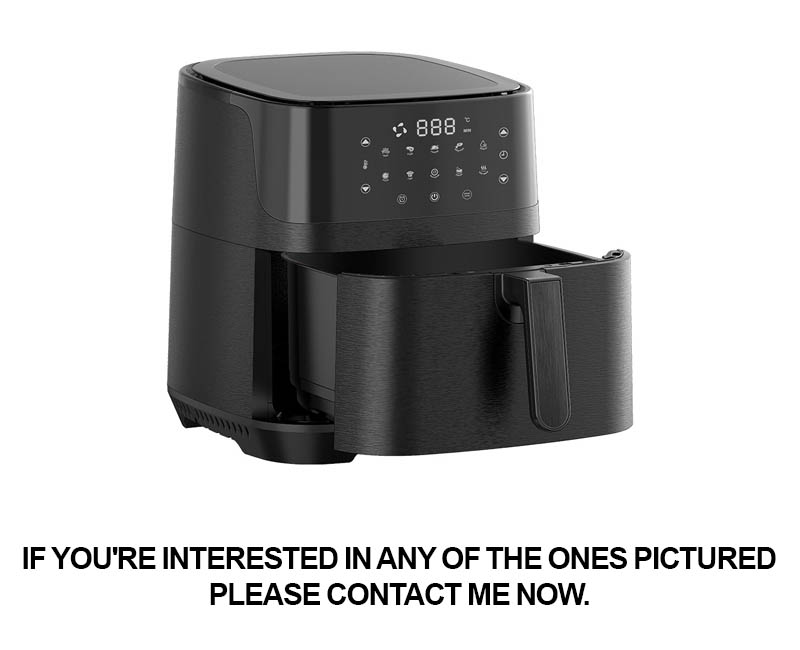
The commercial air fryer market is evolving rapidly, and while it offers numerous benefits, it’s not without its challenges. Here’s a closer look at the hurdles faced and the innovative solutions that are shaping the industry’s future.
Consumer Demand ShiftsAs health consciousness grows, there’s a noticeable shift in consumer demand. People are seeking healthier alternatives to traditional cooking methods, like deep frying, which often results in high-fat content. This shift has pushed manufacturers to innovate and improve the efficiency and health profile of commercial air fryers.
Regulatory ComplianceRegulatory bodies often set stringent standards for foodservice equipment, including air fryers. Ensuring compliance with these regulations can be a challenge for manufacturers. However, many are investing in research and development to create products that meet these standards without compromising on performance or cost.
Energy EfficiencyEnergy consumption is a significant concern for businesses, especially in the foodservice industry. Commercial air fryers must balance efficiency with cooking power. Innovations like programmable settings and advanced heating elements are being developed to reduce energy use without sacrificing cooking times.
Technological IntegrationThe integration of smart technology into commercial air fryers is on the rise. This includes features like remote monitoring, data analytics, and predictive maintenance. While this adds value, it also introduces new challenges in terms of software development and ensuring compatibility with existing systems.
Market SaturationAs the market for commercial air fryers expands, there’s a risk of saturation. Manufacturers need to differentiate their products through unique features, branding, and customer service. This requires a deep understanding of market trends and the ability to pivot quickly when needed.
Cost ManagementMaintaining profitability in a competitive market can be challenging. Factories must manage costs while also investing in quality and innovation. Strategies like lean manufacturing, supply chain optimization, and efficient production processes are key to staying competitive.
Environmental ImpactThe environmental impact of manufacturing and disposing of commercial air fryers is a growing concern. Factories are increasingly focusing on sustainable practices, such as using recycled materials, reducing waste, and ensuring products are recyclable at the end of their life cycle.
Consumer EducationDespite the benefits of commercial air fryers, there’s a need for consumer education. Many customers may not be aware of the health advantages or the versatility of these appliances. Marketing campaigns and educational materials can help bridge this knowledge gap.
Global ExpansionAs the market for commercial air fryers expands globally, factories must navigate different cultural preferences and regulatory environments. This requires a flexible approach to product design and a willingness to adapt to local markets.
Technological DisruptionThe rapid pace of technological advancement can disrupt traditional manufacturing processes. Factories must stay abreast of new technologies and be prepared to invest in upgrades to maintain their competitive edge.
Partnerships and CollaborationsCollaborations with research institutions, ingredient suppliers, and software developers can provide valuable insights and resources. These partnerships can lead to breakthroughs in product design, efficiency, and sustainability.
Customer RetentionRetaining customers in a fast-paced market is crucial. Factories must focus on building long-term relationships through quality products, reliable service, and a commitment to continuous improvement.
The future of the commercial air fryer market is bright, but it’s also complex. By addressing these challenges with innovative solutions, factories can continue to drive the industry forward and meet the evolving needs of consumers and businesses alike.
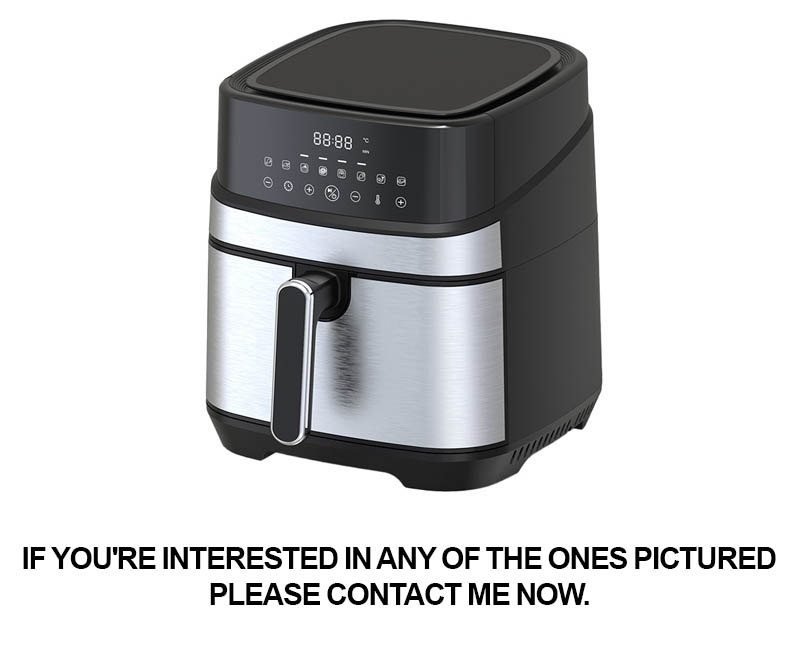
In the world of commercial air fryers, there are several compelling case studies that highlight the impact and innovation within the industry. From small startups to established corporations, these examples showcase the diverse applications and solutions that commercial air fryers offer.
A local café in Amsterdam, known for its commitment to health-conscious dining, decided to invest in a commercial air fryer. The café owner, recognizing the growing demand for low-fat and low-calorie options, replaced their traditional fryers with an air fryer. The results were impressive; the café saw a significant increase in sales of their healthier versions of popular dishes like French fries and onion rings. Customers appreciated the crispy texture and the ability to enjoy their favorite snacks without the guilt.
In a bustling food court in a major city, a fast-food chain faced the challenge of reducing their carbon footprint and offering healthier options to their customers. They turned to a commercial air fryer manufacturer for a solution. The manufacturer provided them with a high-capacity air fryer that could handle the volume of food preparation required. The switch allowed the chain to offer fried chicken, fish, and vegetables with a fraction of the oil typically used. The positive response from customers and the environmental benefits were immediate and substantial.
A gourmet restaurant in San Francisco, known for its fusion cuisine, was looking to add a unique twist to their menu. They collaborated with a commercial air fryer company to develop a specialized unit that could handle the delicate flavors of their Asian-inspired dishes. The result was a commercial air fryer that maintained the integrity of the spices and herbs, creating a crisp outer layer while preserving the rich, aromatic interior. The dish became an instant hit, and the restaurant received glowing reviews for its innovative approach to cooking.
A small food truck operator in Austin, Texas, was looking to differentiate their offerings in a competitive market. They discovered a commercial air fryer that was compact yet powerful enough to cater to their busy schedule. The air fryer allowed them to serve a variety of items, from gourmet donuts to crispy tofu, with minimal oil. The truck’s popularity soared, and they began to attract a loyal following who appreciated the unique, healthy street food options.
A large-scale catering company in London faced the challenge of preparing large quantities of food for events without compromising on quality. They turned to a commercial air fryer manufacturer for a scalable solution. The manufacturer provided them with a series of air fryers that could be stacked and controlled remotely. This allowed the catering company to maintain consistent temperatures and cooking times, ensuring that every dish was perfectly crispy and golden. The efficiency and quality of the food preparation were praised by clients, leading to increased business and repeat orders.
In the healthcare sector, a hospital kitchen in Chicago needed a way to prepare meals that were both nutritious and appetizing for patients. They installed a commercial air fryer in their kitchen, which was designed to be easy to clean and maintain. The air fryer allowed them to offer a variety of low-fat, high-fiber dishes that were also delicious. Patients reported a significant improvement in their dining experience, and the hospital’s food service department received positive feedback from both patients and staff.
These case studies demonstrate the versatility and benefits of commercial air fryers across various industries. From cafes and fast-food chains to gourmet restaurants, food trucks, catering companies, and healthcare facilities, the technology has proven to be a game-changer in the way food is prepared and consumed. As the demand for healthier options continues to grow, it’s clear that commercial air fryers will play a pivotal role in shaping the future of foodservice.
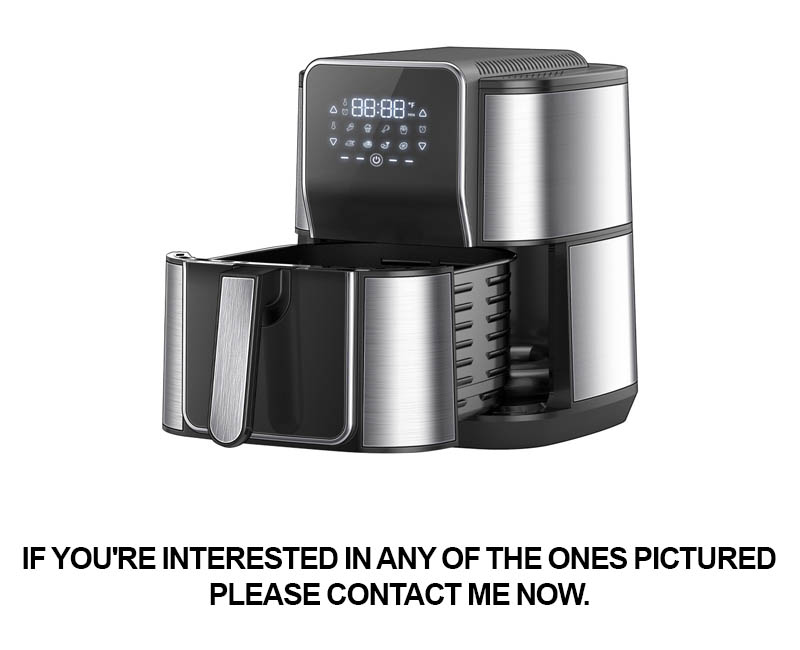
In today’s fast-paced world, consumer preferences are evolving rapidly, and the kitchen appliances industry is no exception. The consumer perspective on commercial air fryers has shifted significantly over the years, reflecting a growing demand for healthier cooking methods and convenience. Here’s a glimpse into how consumers are engaging with these innovative kitchen gadgets.
Consumers are increasingly aware of the health implications of traditional cooking methods, such as frying in oil. The introduction of commercial air fryers has been met with a positive reception as they offer a healthier alternative. Many consumers appreciate the ability to enjoy fried foods with a fraction of the fat content, making them a more appealing option for those looking to maintain a balanced diet.
The ease of use is another aspect that consumers find appealing about commercial air fryers. The intuitive interfaces, straightforward operation, and minimal cleanup requirements make these appliances a breeze to integrate into daily life. Busy parents, especially, appreciate the time-saving aspect, as they can prepare meals quickly while juggling multiple responsibilities.
One of the key benefits from a consumer’s standpoint is the variety of recipes that can be created with a commercial air fryer. From crispy chicken wings to golden-brown vegetables, the versatility of these appliances has won over many who were initially skeptical. Consumers enjoy experimenting with different flavors and textures, turning their kitchen into a culinary playground.
Safety concerns are always at the forefront of consumer minds, and commercial air fryers have proven to be a safe choice. With their sealed cooking chambers and automatic shut-off features, these appliances minimize the risk of fires and burns, making them a safer option for families with young children.
Despite the many advantages, consumers have expressed concerns about the initial cost of commercial air fryers. While the initial investment can be daunting, many find that the long-term savings from reduced oil usage and the versatility of the appliance make it a worthwhile purchase.
In terms of design, consumers have varying preferences. Some appreciate the sleek, modern look of commercial air fryers, which can enhance the aesthetics of any kitchen. Others prefer a more classic or industrial design that blends well with their existing kitchen decor.
Maintenance and durability are also crucial factors in the consumer’s decision-making process. Many consumers look for appliances that are easy to clean and built to last, ensuring that their investment remains practical over time.
The rise of social media and online reviews has had a profound impact on the consumer perspective. Positive experiences shared by fellow consumers can significantly influence buying decisions. Word-of-mouth recommendations and detailed reviews provide real-life insights into the performance and reliability of commercial air fryers.
As the market for commercial air fryers continues to grow, manufacturers are responding to consumer feedback by improving their products. This includes enhancing features, such as increased capacity and temperature control, as well as focusing on sustainability and eco-friendly materials.
In conclusion, the consumer perspective on commercial air fryers is multifaceted. Health-conscious individuals are drawn to their health benefits, while convenience-seekers value their ease of use and time-saving capabilities. The versatility, safety, and design of these appliances have all played a role in shaping consumer perception. As the market evolves, it will be interesting to see how manufacturers continue to cater to these diverse needs and expectations.